About the Church
 |
 |
 |
 |
 |
 |
 |
The Role of Laymen in the Church – II
Natural Law Requires the Faithful
to Defend the Church
Today I continue my argument showing that laymen can and must defend the Catholic Church when she is attacked. This is in perfect agreement with Natural Law.
II. Natural Law
When a mother is physically or morally attacked, each member of the family is also attacked or offended; in this case, any member of that family has the obligation to defend her life and honor. It is an imperative that comes from the right she has to live and have honor. It is also an imperative that comes from the honor the family has the right to have.
A mother's right to her life and honor are part of the most elementary principles of Natural Law.
The same applies to the life and honor of the Church. Any Catholic – be he a member of the Hierarchy or a simple layman – has the obligation to defend her against her enemies.
Examples of laymen defending good doctrine abound in History.
1. Lay martyrs under the Roman persecutions
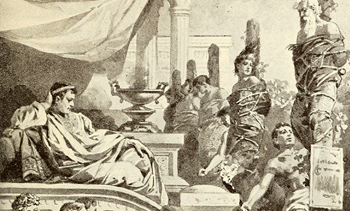 What were those millions of lay men and women who died during Roman persecutions in the early centuries of the Church if not defenders of the Catholic Faith? Indeed, they were given the alternative of living if they would deny Christ and burn incense to the pagan idols or dying if they held steadfast to the Catholic Faith. They said: "No, we prefer not to live in these conditions; we will defend the Catholic Faith and die giving testimony to her veracity."
What were those millions of lay men and women who died during Roman persecutions in the early centuries of the Church if not defenders of the Catholic Faith? Indeed, they were given the alternative of living if they would deny Christ and burn incense to the pagan idols or dying if they held steadfast to the Catholic Faith. They said: "No, we prefer not to live in these conditions; we will defend the Catholic Faith and die giving testimony to her veracity."
Would those priests who today deny laymen the right to defend the Church, affirm that at the time of the early persecutions, only priests and bishops had the right to do so? They should deny this, if they were consistent. But, if they did, they would be considered insane.
2. Lay persons who defended the Faith under the Arian crisis
As soon as the Church left the Catacombs in the 4th century, she began to suffer the internal scourge of the heresies.
Among these initial heresies, the most pernicious was perhaps Arianism and its moderate version, Semi-Arianism. The errors of Arianism infiltrated almost the entire Hierarchy and clergy of the time. The great majority of the High and Low Clergy became Arian to such a degree that the only two Bishops still defending the Faith were St. Athanasius, deposed Patriarch of Alexandria in Egypt, and St. Hilary, Bishop of Poitiers in France. Both were severely persecuted.
Now, when the Hierarchy and clergy were preaching heresy, who kept the Faith integral and passed it intact and sound to the next generations? It was the laity. It was the laypeople by means of their sensus fidelium (sense of the faithful) who rejected the heresy, which taught that the Son, and consequently Jesus Christ, was not equal to God the Father but less than Him. The sensus fidelium equips laymen with an almost instinctive capacity to know and discern the truths of the Faith, which they are obliged to defend if they see these truths challenged or violated. (1)
3. The combat against the Albigensians made by laymen
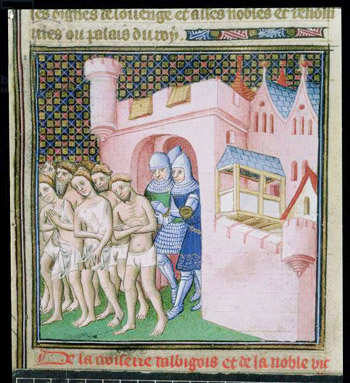 The Albigensian heresy was defeated by many Catholics who came together to fight this danger. Among the most brilliant was undoubtedly St. Dominic of Guzman who founded an Order for this purpose. Our Lady gave him the Rosary to help exterminate that heresy.
The Albigensian heresy was defeated by many Catholics who came together to fight this danger. Among the most brilliant was undoubtedly St. Dominic of Guzman who founded an Order for this purpose. Our Lady gave him the Rosary to help exterminate that heresy.
However, the physical arm that completed the job was a military host commanded by Simon de Montfort, who extirpated the Albigensians from France. His successful nine-month siege of the Cathar-held Château de Montségur is the landmark of the end of that heresy.
If our objectors were correct – those who say that TIA or other lay groups cannot defend the Church because this is the task for the High and Low clergy – then the role played by Simon de Montfort would have been wrong.
4. Laymen defended the Church in the Crusades
The glorious movement of the Crusades was in effect a shout of indignation over the profanation of the Holy Sepulcher and the Holy Land by the Muslims. That movement was born from the conviction that every Catholic has the right to defend the honor of the Church.
Again, does this not prove that laymen are entitled to defend the Church?
5. Anti-Protestant religious war
The same can be said of the heroic anti-Protestant religious wars that shook Europe in the 16th century.
It was the laymen who carried out the temporal defense of the Church and Christendom, with or without the support of the Hierarchy.
6. Defenders of the Altar & Throne
In the reaction against the French Revolution, there were two provinces of France – the Vandée and Bretagne – that raised up in arms to defend the King and the Catholic Religion. There were priests in that movement, but the principal force was made up of laymen.
Unfortunately, many clergymen of the time adhered to the principles of the Enlightenment and swore the oath to the Civil Constitution of the Clergy – a document that advanced many of the principles that were later accepted by Vatican II and today's Hierarchy. At the time, those ecclesiastics were correctly considered traitors and denounced by both the faithful clergy and the laymen. If the Church and Christendom had been forced to rely on a defense from those unfaithful ecclesiastics, most probably it would have died then in France.
7. The ultramontane & counter-revolutionary movement
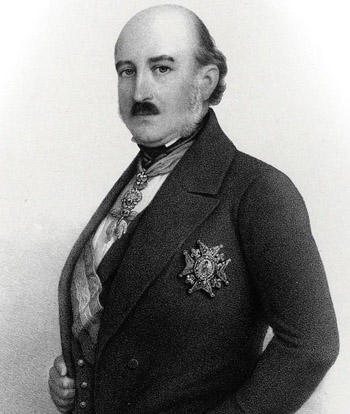
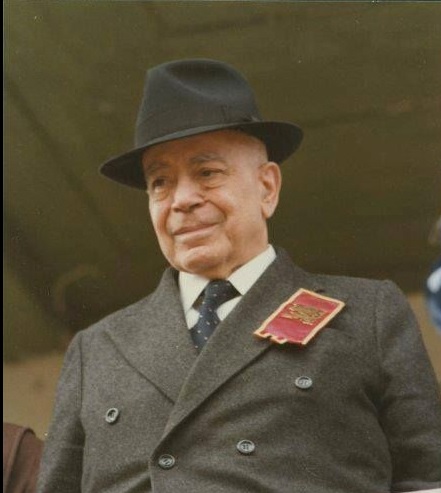 A final objection could be raised by TIA's opponents: "Yes we agree, when necessary laymen should defend the Church in temporal and military efforts, but never in intellectual and doctrinal disputes."
A final objection could be raised by TIA's opponents: "Yes we agree, when necessary laymen should defend the Church in temporal and military efforts, but never in intellectual and doctrinal disputes."
This argument was already proved false in the aforementioned cases of the early martyrs and the anti-Arian laymen who defended the Church.
It is false also in the case of the many Ultramontane Catholics who defended the Church against Liberalism and Modernism. Their dispute took place mainly on the intellectual and doctrinal debates in press articles. Those Ultramontane Catholics were in the great part laymen. The atmosphere that preceded the proclamation of the dogma of Papal Infallibility (1870) was in considerable part prepared by the Catholic press directed by those laymen.
This movement generated other good fruit in the 20th century. Among them, the Carlist Movement in Spain, the Cristero Movement in Mexico, the Catholic Counter-Revolutionary movement in South America in which Plinio Corrêa de Oliveira emerges as an outstanding leader.
All these were basically lay movements defending the Church and Christendom against their external and internal enemies in both the spiritual and temporal spheres, using both intellectual and military weapons.
Second conclusion
I conclude with these words by A.S. Guimarães: "Natural Law itself entitles a Catholic to speak about his Faith as long as he is moved by love of the Church and does so according to the dogmatic and moral precepts taught by her, with due respect for the members of the Hierarchy, and above all the Sovereign Pontiff." (2)
Moreover, that right became a duty after a process of "auto-demolition of the Church" began after the Council with the participation of many Prelates. In such a case, a qualified layman should not only discuss the points and compromises he sees being made that harm Holy Mother Church, but also he should respectfully question those responsible for those deviations.
A hypocritical position
Finally, let me address TIA's objectors directly.
Many of you – traditionalist priests and Bishops – criticize the Popes and the Prelates of the Conciliar Church. You do this correctly because they are preaching heresies like universal salvation, communion in the sacraments with heretics, the denial of Heaven, Hell and Purgatory etc. You also advise your lay followers to do the same. So, why now do you criticize TIA for asking you questions when you appear to be compromising with those same errors?
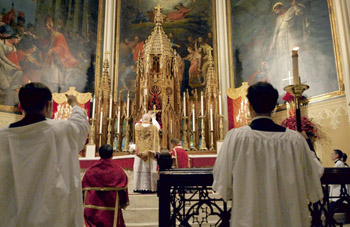 Could you tell me what is different in both positions? Why it is right for you to criticize the conciliar Hierarchs and it is wrong for TIA to ask you questions? What makes your position humble and our position arrogant?
Could you tell me what is different in both positions? Why it is right for you to criticize the conciliar Hierarchs and it is wrong for TIA to ask you questions? What makes your position humble and our position arrogant?
Or maybe I am missing something: You are perhaps so elevated that you stand above any other Prelate or priest, unless he belongs to your own privileged group. Am I correct? If not, what entitles you to be untouchable?
It certainly seems to me that when you become indignant because a few respectful questions were addressed to you, and allege that laymen can never question priests, you are taking a hypocritical position.
Indeed, when it is clear that compromises are being made by traditionalist or conservative societies like the Fraternity of St. Peter, the Institute of Christ the King, the Institute of the Good Shepherd, the Administration St. John Baptist Vianney and the SSPX, it should be normal for you to answer in a honest way the questions some laymen are addressing to you.
This is what we at TIA certainly do, and we do so precisely because we do not want to fall back into the same errors that we have – with great effort and prayer – resisted and fought.
Continued

II. Natural Law
When a mother is physically or morally attacked, each member of the family is also attacked or offended; in this case, any member of that family has the obligation to defend her life and honor. It is an imperative that comes from the right she has to live and have honor. It is also an imperative that comes from the honor the family has the right to have.
A mother's right to her life and honor are part of the most elementary principles of Natural Law.
The same applies to the life and honor of the Church. Any Catholic – be he a member of the Hierarchy or a simple layman – has the obligation to defend her against her enemies.
Examples of laymen defending good doctrine abound in History.
1. Lay martyrs under the Roman persecutions

Lay Christians become human torches
by the order of Nero
Would those priests who today deny laymen the right to defend the Church, affirm that at the time of the early persecutions, only priests and bishops had the right to do so? They should deny this, if they were consistent. But, if they did, they would be considered insane.
2. Lay persons who defended the Faith under the Arian crisis
As soon as the Church left the Catacombs in the 4th century, she began to suffer the internal scourge of the heresies.
Among these initial heresies, the most pernicious was perhaps Arianism and its moderate version, Semi-Arianism. The errors of Arianism infiltrated almost the entire Hierarchy and clergy of the time. The great majority of the High and Low Clergy became Arian to such a degree that the only two Bishops still defending the Faith were St. Athanasius, deposed Patriarch of Alexandria in Egypt, and St. Hilary, Bishop of Poitiers in France. Both were severely persecuted.
Now, when the Hierarchy and clergy were preaching heresy, who kept the Faith integral and passed it intact and sound to the next generations? It was the laity. It was the laypeople by means of their sensus fidelium (sense of the faithful) who rejected the heresy, which taught that the Son, and consequently Jesus Christ, was not equal to God the Father but less than Him. The sensus fidelium equips laymen with an almost instinctive capacity to know and discern the truths of the Faith, which they are obliged to defend if they see these truths challenged or violated. (1)
3. The combat against the Albigensians made by laymen

A Catholic force of laymen expels the Albigensians from Carcassonne
However, the physical arm that completed the job was a military host commanded by Simon de Montfort, who extirpated the Albigensians from France. His successful nine-month siege of the Cathar-held Château de Montségur is the landmark of the end of that heresy.
If our objectors were correct – those who say that TIA or other lay groups cannot defend the Church because this is the task for the High and Low clergy – then the role played by Simon de Montfort would have been wrong.
4. Laymen defended the Church in the Crusades
The glorious movement of the Crusades was in effect a shout of indignation over the profanation of the Holy Sepulcher and the Holy Land by the Muslims. That movement was born from the conviction that every Catholic has the right to defend the honor of the Church.
Again, does this not prove that laymen are entitled to defend the Church?
5. Anti-Protestant religious war
The same can be said of the heroic anti-Protestant religious wars that shook Europe in the 16th century.
It was the laymen who carried out the temporal defense of the Church and Christendom, with or without the support of the Hierarchy.
6. Defenders of the Altar & Throne
In the reaction against the French Revolution, there were two provinces of France – the Vandée and Bretagne – that raised up in arms to defend the King and the Catholic Religion. There were priests in that movement, but the principal force was made up of laymen.
Unfortunately, many clergymen of the time adhered to the principles of the Enlightenment and swore the oath to the Civil Constitution of the Clergy – a document that advanced many of the principles that were later accepted by Vatican II and today's Hierarchy. At the time, those ecclesiastics were correctly considered traitors and denounced by both the faithful clergy and the laymen. If the Church and Christendom had been forced to rely on a defense from those unfaithful ecclesiastics, most probably it would have died then in France.
7. The ultramontane & counter-revolutionary movement

Juan Donoso Cortés, a Spanish counter-revolutionary leader of the Ultramontane; below, Prof. Plinio

This argument was already proved false in the aforementioned cases of the early martyrs and the anti-Arian laymen who defended the Church.
It is false also in the case of the many Ultramontane Catholics who defended the Church against Liberalism and Modernism. Their dispute took place mainly on the intellectual and doctrinal debates in press articles. Those Ultramontane Catholics were in the great part laymen. The atmosphere that preceded the proclamation of the dogma of Papal Infallibility (1870) was in considerable part prepared by the Catholic press directed by those laymen.
This movement generated other good fruit in the 20th century. Among them, the Carlist Movement in Spain, the Cristero Movement in Mexico, the Catholic Counter-Revolutionary movement in South America in which Plinio Corrêa de Oliveira emerges as an outstanding leader.
All these were basically lay movements defending the Church and Christendom against their external and internal enemies in both the spiritual and temporal spheres, using both intellectual and military weapons.
Second conclusion
I conclude with these words by A.S. Guimarães: "Natural Law itself entitles a Catholic to speak about his Faith as long as he is moved by love of the Church and does so according to the dogmatic and moral precepts taught by her, with due respect for the members of the Hierarchy, and above all the Sovereign Pontiff." (2)
Moreover, that right became a duty after a process of "auto-demolition of the Church" began after the Council with the participation of many Prelates. In such a case, a qualified layman should not only discuss the points and compromises he sees being made that harm Holy Mother Church, but also he should respectfully question those responsible for those deviations.
A hypocritical position
Finally, let me address TIA's objectors directly.
Many of you – traditionalist priests and Bishops – criticize the Popes and the Prelates of the Conciliar Church. You do this correctly because they are preaching heresies like universal salvation, communion in the sacraments with heretics, the denial of Heaven, Hell and Purgatory etc. You also advise your lay followers to do the same. So, why now do you criticize TIA for asking you questions when you appear to be compromising with those same errors?

Today's traditionalists are compromising
with the errors of the Conciliar Church
Or maybe I am missing something: You are perhaps so elevated that you stand above any other Prelate or priest, unless he belongs to your own privileged group. Am I correct? If not, what entitles you to be untouchable?
It certainly seems to me that when you become indignant because a few respectful questions were addressed to you, and allege that laymen can never question priests, you are taking a hypocritical position.
Indeed, when it is clear that compromises are being made by traditionalist or conservative societies like the Fraternity of St. Peter, the Institute of Christ the King, the Institute of the Good Shepherd, the Administration St. John Baptist Vianney and the SSPX, it should be normal for you to answer in a honest way the questions some laymen are addressing to you.
This is what we at TIA certainly do, and we do so precisely because we do not want to fall back into the same errors that we have – with great effort and prayer – resisted and fought.
Continued
- For more on this topic see A.S. Guimarães, In the Murky Waters of Vatican II, TIA: Los Angeles, 2008, pp. 29-33, footnotes 1 to 4.
- Ibid., pp. 35-36.

Posted on August 30,2021














